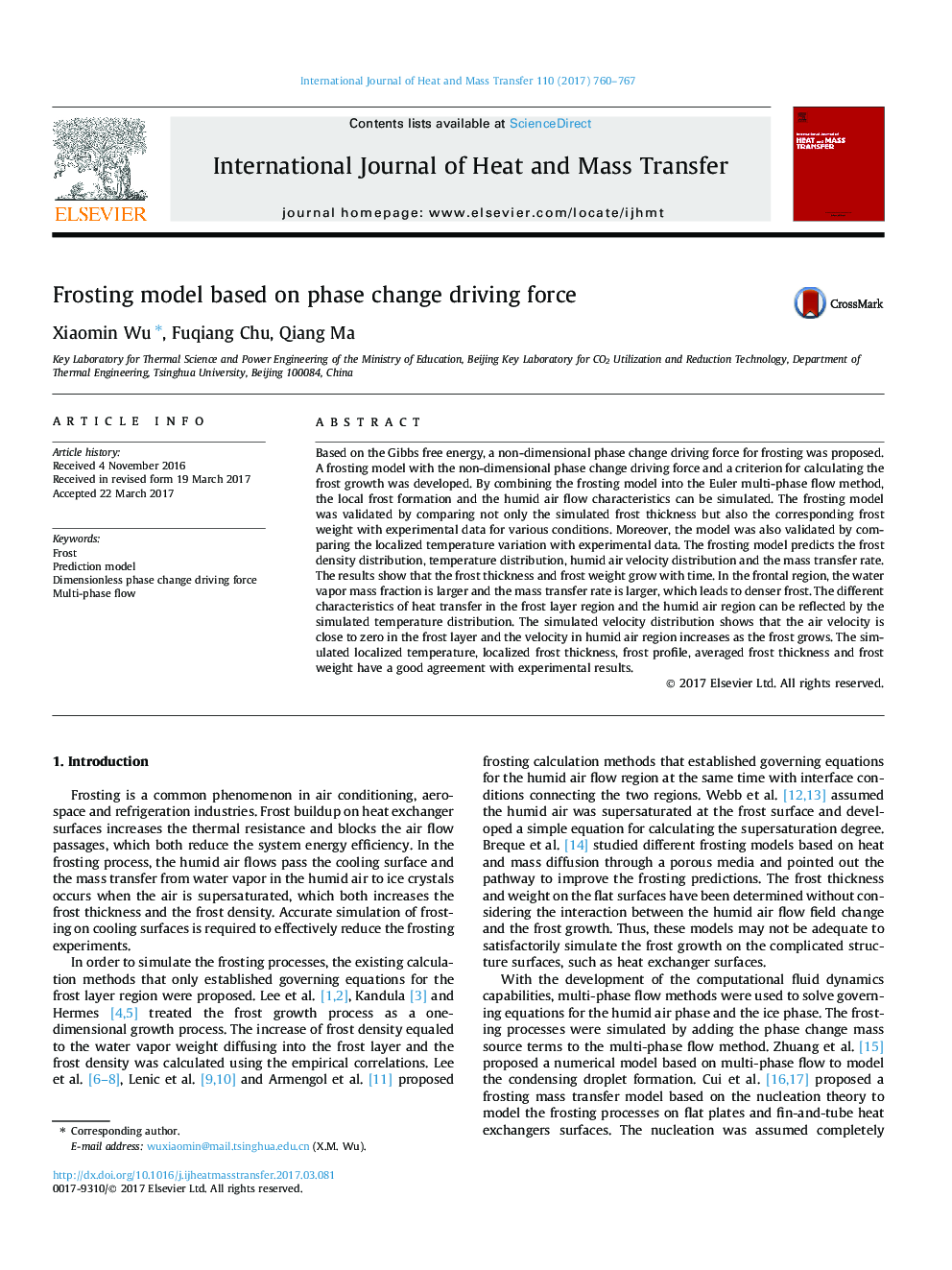| Article ID | Journal | Published Year | Pages | File Type |
|---|---|---|---|---|
| 4993605 | International Journal of Heat and Mass Transfer | 2017 | 8 Pages |
Abstract
Based on the Gibbs free energy, a non-dimensional phase change driving force for frosting was proposed. A frosting model with the non-dimensional phase change driving force and a criterion for calculating the frost growth was developed. By combining the frosting model into the Euler multi-phase flow method, the local frost formation and the humid air flow characteristics can be simulated. The frosting model was validated by comparing not only the simulated frost thickness but also the corresponding frost weight with experimental data for various conditions. Moreover, the model was also validated by comparing the localized temperature variation with experimental data. The frosting model predicts the frost density distribution, temperature distribution, humid air velocity distribution and the mass transfer rate. The results show that the frost thickness and frost weight grow with time. In the frontal region, the water vapor mass fraction is larger and the mass transfer rate is larger, which leads to denser frost. The different characteristics of heat transfer in the frost layer region and the humid air region can be reflected by the simulated temperature distribution. The simulated velocity distribution shows that the air velocity is close to zero in the frost layer and the velocity in humid air region increases as the frost grows. The simulated localized temperature, localized frost thickness, frost profile, averaged frost thickness and frost weight have a good agreement with experimental results.
Related Topics
Physical Sciences and Engineering
Chemical Engineering
Fluid Flow and Transfer Processes
Authors
Xiaomin Wu, Fuqiang Chu, Qiang Ma,
